Annex E - Profile of Commissioners and Curatorial Team
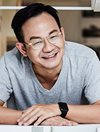
Mark Wee, Co-Commissioner
Mark Wee joined the DesignSingapore Council (Dsg) as Executive Director (Designate) in March 2018. Before joining Dsg, he was the founder and principal of ANNEX A, a design, innovation and architectural consultancy that takes a design thinking approach to crafting human-centred experiences.
He is a pioneer in using design thinking to shape innovative human-centred experiences across products, services, and environments. He is also an award-winning designer and architect.
He represented Singapore at the 11th Venice Biennale International Architecture Exhibition with work from UNION Experience, where he was a founding partner. From 2011 to 2016, he led the Experience Design studio, the strategic design and innovation practice that he started at ONG&ONG. He has redefined user experience for clients such as the Housing Development Board, Singapore Airlines, the Singapore Stock Exchange, FRANK by OCBC, Sentosa, UOB, alongside many others across both private and public sectors. He also served as an adjunct lecturer at the National University of Singapore (NUS)'s Institute of System Science (ISS), teaching digital service design and innovation practice.
He is interested in the design and shaping of places to strengthen identity and community in the city, as well as the integration of the digital into the physical world for the re-imagination of city life. His book Let's Experience Design! is available in most major physical and online bookstores.
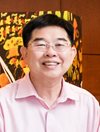
Larry Ng, Co-Commissioner
Larry Ng is the Group Director of Architecture and Urban Design Excellence (AUDE), Urban Redevelopment Authority (URA), which is the planning and conservation authority of Singapore. He spearheads URA's effort to promote architecture and urban design excellence and to raise public awareness and appreciation of Singapore's built environment.
Larry has also been appointed by the Minister for National Development as the Registrar of the Board of Architects, Singapore since 2006, with the mission to enhance competency, integrity and professionalism of the practice of architecture in Singapore. As the Registrar, he chaired the ASEAN Mutual Recognition Agreement on Architectural Services from 2006 to 2009 and was instrumental in setting up the ASEAN Architects Council. He also served as Chairman of the ASEAN Business Services Sectoral Working Group from 2010 to 2017, with the mission to achieve mobility of professionals within ASEAN. He was also involved in the APEC Architect Project since 2006 and was also instrumental in setting up the new Reciprocal Recognition Framework.
Larry was actively involved in the World Cities Summit (WCS) since its inauguration in 2008 and served as the Managing Director from 2012 to 2017. WCS is an exclusive and premier global platform for government leaders and industry experts to address liveable and sustainable city challenges, share integrated urban solutions and forge new partnerships. The key events include organising the Mayors Forum, the Young Leaders Symposium and the Lee Kuan Yew World City Prize Lecture, Forum and the Award Ceremony and Banquet. He has been appointed as the Prize Secretary for the Lee Kuan Yew World City Prize since 2009. The Lee Kuan Yew World City Prize is a biennial international award that honours outstanding achievements and contributions to the creation of liveable, vibrant and sustainable urban communities around the world. The Prize is awarded to cities and recognises their key leaders and organisations for displaying foresight, good governance and innovation in tackling the many urban challenges faced, to bring about social, economic and environmental benefits in a holistic way to their communities. Through this Prize, Singapore hopes to facilitate the sharing of best practices in urban solutions among cities and spur further innovation in the area of sustainable urban development.
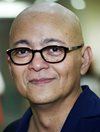
Erwin Viray, Lead Curator
Professor Erwin Viray is the Head of Pillar of Architecture and Sustainable Design in Singapore University of Technology and Design (SUTD). He was Global Excellence Professor at Kyoto Institute of Technology and Head of the Graduate School of Architecture and Design in 2012 for two years. In addition, he holds several professional leadership roles including Chief Communications Officer for the Kyoto Design Lab and a member of the Singapore President’s Design Awards jury since 2012 and the Chair of the jury since 2013. He is also an Award Ambassador for the LafargeHolcim Awards in Asia Pacific, a jury chair of archiprixSEA 2012 and 2016, a member of management board the TOTO Gallery MA, an Advisory Council member for the Barcelona Institute of Architecture. He has been Editor of the influential magazine, a+u (Architecture + Urbanism) since 1996.
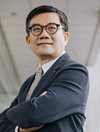
Ho Puay-peng, Curatorial Collaborator
Professor Puay-peng Ho is Head of Department of Architecture, School of Design and Environment, National University of Singapore. Prior to joining NUS, he was Professor of Architecture and served as Director of School of Architecture and University Dean of Students at The Chinese University of Hong Kong. He received Master of Art in Architectural Studies (First Class Honours) and Diploma of Architecture from the University of Edinburgh, and practiced architecture in Edinburgh and Singapore. Subsequently, Puay-peng took up PhD research at the School of Oriental and African Studies at the University of London. In the last 25 years, he has researched and published in the areas of Buddhist art and architecture, Chinese architectural history, vernacular architecture and history of modern architecture in China and Hong Kong.
He was conservation consultant, architect and adviser to some 100 conservation projects in Hong Kong, ranging from PMQ, Haw Par Villa, Comix Homebase, Oil Street Art Space, Court of Final Appeal, Former French Mission Building to New Campus for Chicago
University Booth School. He was also appointed to many public and private boards and committee, including as Chairman of the Lord Wilson Heritage Trust, member of Town Planning Board, Antiquities Advisory Board, Housing Authority. He was appointed Justice of the Peace by Hong Kong SAR Government. Currently, he has been appointed as a Patron of International Dunhuang Project, British Library.
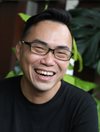
Chong Keng Hua, Curator
Graduated with PhD in Architecture, Dr Keng Hua Chong is an Assistant Professor of Architecture and Sustainable Design at the Singapore University of Technology and Design (SUTD), where he leads the Social Urban Research Group (SURGe) and co-leads the Opportunity Lab (O-Lab). He is also the partner of COLOURS: Collectively Ours. Co-author of Second Beginnings: Senior Living Redefined (2018), and Creative Ageing Cities: Place Design with Older People in Asian Cities (2018), he is currently leading various research and design projects related to ageing, social architecture, and participatory community design across Asia. He was curator for the Singapore Pavilion at the Seoul Biennale of Architecture and Urbanism 2017.
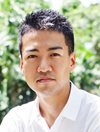
Tomohisa Miyauchi, Curator
Tomohisa Miyauchi is Senior Lecturer at the Department of Architecture, National University of Singapore, conducting design studio and lectures. His teaching and research areas include architectural practice as entrepreneurship and experimentation, contemporary architectural theory, and curation in architecture. He received his Bachelor of Architecture from the Southern California Institute of Architecture (SCI-Arc) in 2000, and Master in Architecture from the Graduate School of Design at Harvard University (GSD) in 2004. He set up an architectural partnership in Tokyo shortly after graduating from SCI-Arc and was responsible for the design of a host of built projects relating to art, furniture, interior and architecture in Japan and China. In 2010, he was selected as one of the 20 emerging designers in “JAPAN DESIGN+” by the Ministry of Economy, Trade, and Industry (METI) of Japan. He was co-curator for the Singapore Pavilion at the 15th International Architecture Exhibition, La Biennale di Venezia, 2016.

Wu Yen Yen, Curator
Yen Yen Wu is a registered Architect practising in Singapore and Principal of Genome Architects. She received her Bachelor of Arts (Architectural Studies) from National University of Singapore, and Master of Architecture from Columbia University Graduate School of Architecture, Planning and Preservation (GSAPP) in 2003. She had worked on a number of local residential and commercial to larger-scaled hospitality projects in Asia and the Middle East before starting Genome Architects in 2009. Genome Architects has a portfolio of local private and several key public projects, premised on her interest in approaching design through understanding natural systems. She is also Adjunct Tutor at National University of Singapore, School of Architecture, and is a Council Member of Singapore Institute of Architects.

Jason Lim Teck Chye, Curator and Exhibition Designer
Jason Lim is an Adjunct Assistant Professor at SUTD and director of TakahashiLim A + D, a design consultancy based in Singapore. He received a doctorate from ETH Zurich, completing his dissertation at Gramazio Kohler Research. He also holds a Master of Engineering degree from the Stevens Institute of Technology, as well as a Bachelor of Architecture degree from Cornell University.
He worked previously as a PhD researcher at the Future Cities Lab in the Singapore-ETH centre, and as an architectural designer at BriggsKnowles Architecture + Design in New York City. In addition, he has taught at Parsons the New School for Design, Stevens Institute of Technology, and the National University of Singapore.